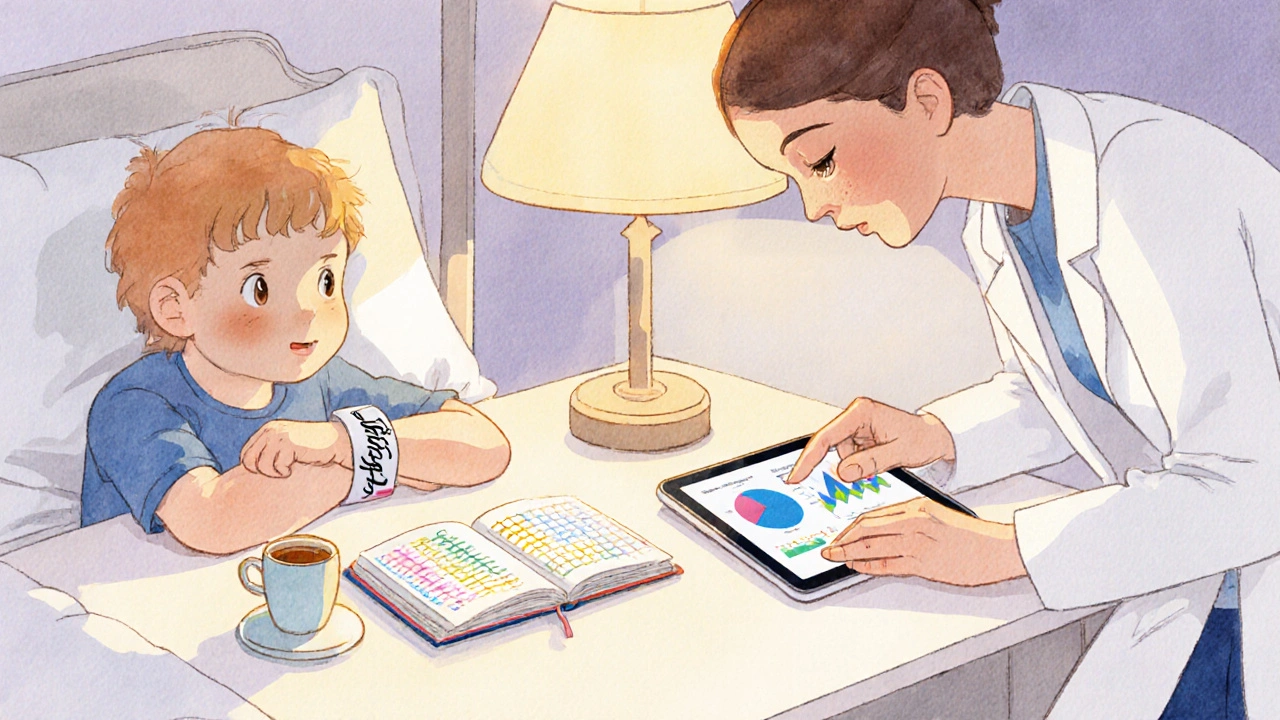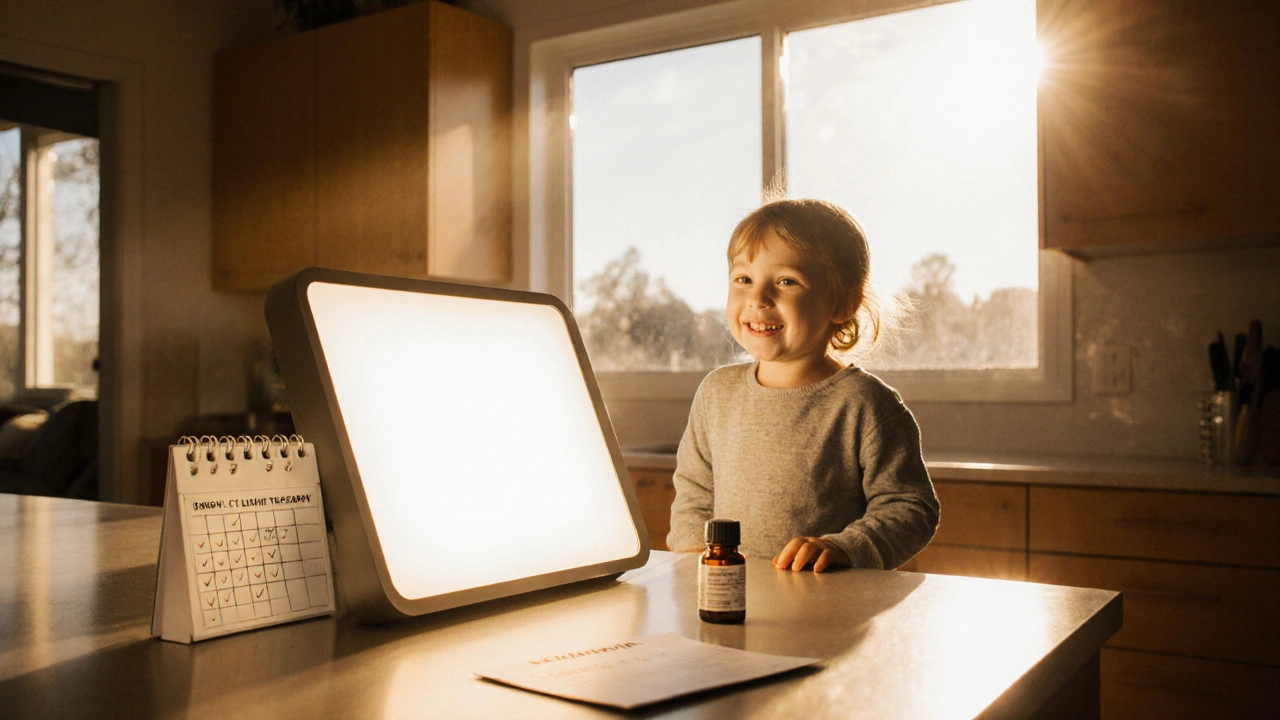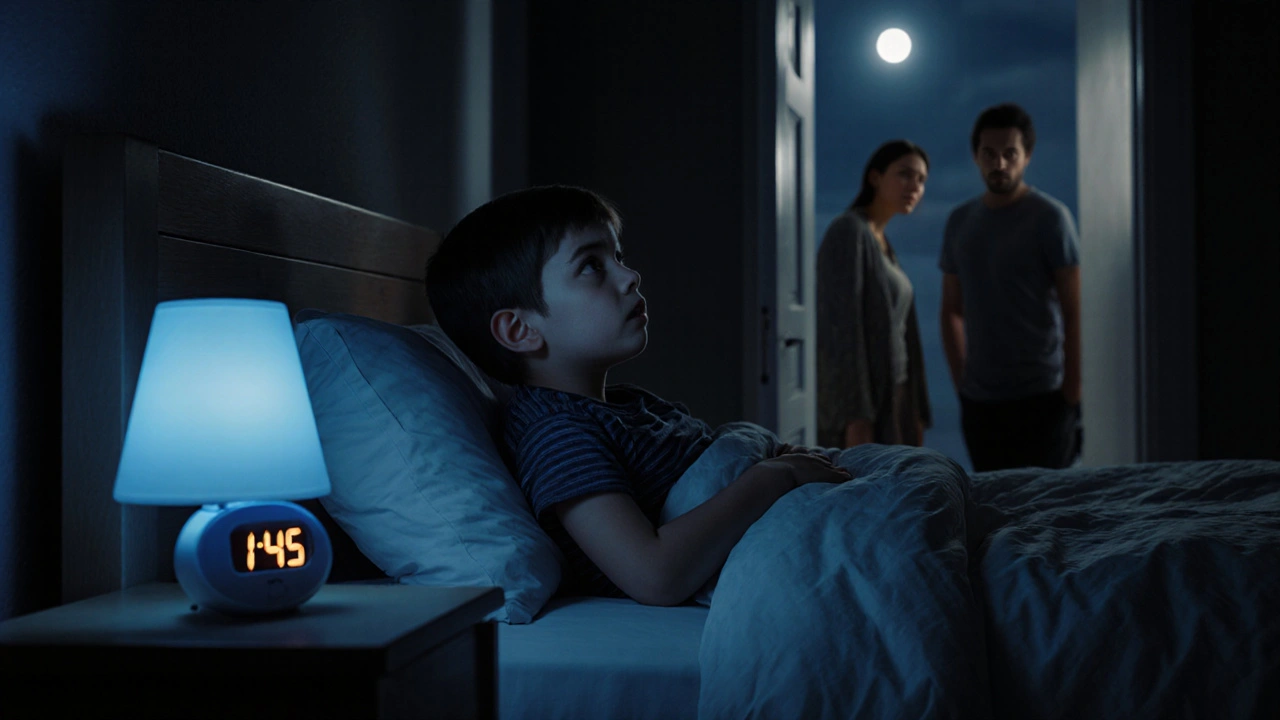Delayed Sleep Phase Syndrome Symptom Checker
This tool helps identify potential signs of Delayed Sleep Phase Syndrome (DSPS) in children. Select all symptoms that apply to your child:
Results
When your child refuses to go to bed before midnight and then drags themselves out of school half‑asleep, you might think it’s just a phase. In many cases, however, the pattern points to Delayed Sleep Phase Syndromea circadian rhythm sleep‑wake disorder where the internal clock is delayed, causing late‑night sleep onset and difficulty waking at conventional times. Understanding Delayed Sleep Phase Syndrome can help parents get their kids back on a normal schedule before it harms grades, mood, and family life.
Key Takeaways
- DSPS is a biological shift in the body’s clock, not just “staying up late.”
- Typical signs in children include chronic bedtime after 11pm, morning grogginess, and poor school performance.
- Diagnosis relies on sleep logs, actigraphy, and sometimes a pediatric sleep specialist.
- Effective treatments combine timed melatonin, bright‑light exposure, chronotherapy, and behavioral sleep hygiene.
- Early intervention prevents long‑term academic and emotional consequences.
What Is Delayed Sleep Phase Syndrome?
Circadian Rhythmthe roughly 24‑hour internal clock that regulates sleep, hormone release, and body temperature governs when we feel sleepy or alert. In DSDS, the rhythm is delayed by 2‑4hours, so the child’s physiological nighttime starts much later than the socially imposed bedtime.
This mismatch means the child’s body is ready for sleep at 2am, yet school starts at 8am. The result is chronic sleep loss, daytime sleepiness, and a cascade of behavioral issues.
How DSPS Shows Up in Children
Because kids can’t articulate “my clock is off,” parents need to watch for concrete signs:
- Consistently falling asleep after 11pm (often 1‑3am) on school nights.
- Difficulty waking up without multiple alarms; frequent tardiness.
- Morning irritability, foggy thinking, or needing a nap after school.
- Declining grades, especially in subjects requiring concentration.
- Social withdrawal or increased conflict with peers and teachers.
- Physical complaints like headaches or stomachaches that improve after a good night’s sleep.
These symptoms overlap with ADHD or anxiety, so accurate diagnosis matters.

Diagnosing the Disorder
Doctors start with a detailed sleep history-parents keep a sleep diary for two weeks, noting bedtime, wake time, and daytime sleepiness. The diary is often paired with Actigraphya wrist‑worn device that records movement to estimate sleep‑wake patterns over several days. The data reveal whether the child’s sleep window is consistently delayed.
If the pattern persists for more than three months and impacts daily life, a referral to a Pediatric Sleep Specialista physician with expertise in childhood sleep disorders is recommended.
Treatment Options Overview
Successful management usually blends several strategies. Below is a quick comparison of the most common approaches.
| Treatment | How It Works | Typical Regimen | Pros | Cons |
|---|---|---|---|---|
| Timed Melatonin | Provides a hormonal cue to advance the sleep phase | 0.5‑3mg, taken 30‑60min before desired bedtime for 2‑4weeks | Easy to administer; often effective within days | May cause morning grogginess if mistimed; long‑term safety still studied |
| Bright‑Light Therapy | Exposes the child to 10,000‑lux light in the early morning to shift the clock earlier | 20‑30min each morning, ideally within 30min of wake‑up | Non‑pharmacologic; improves mood and alertness | Requires consistent schedule; eye‑strain if glasses not used |
| Chronotherapy (Gradual Phase Advance) | Systematically moves bedtime earlier by 15‑30min each night | Shift bedtime forward each night until target time is reached (usually 1‑2weeks) | Can reset the internal clock without medication | Risk of relapse if schedule lapses; demanding for families |
| Cognitive‑Behavioral Therapy for Insomnia (CBT‑I) | Teaches sleep‑friendly thoughts and habits | 6‑8 weekly sessions with a trained therapist | Addresses underlying anxiety; lasting behavioral changes | Access may be limited; requires active participation |
| Sleep Hygiene Optimization | Adjusts environmental and routine factors that impact sleep | Consistent bedtime, dim lights after 8pm, no screens 1hr before bed | Foundational, cost‑free, supports all other treatments | Alone often insufficient for severe phase delays |
Putting the Pieces Together: A Practical Plan
- Establish baseline data. Keep a two‑week sleep log and use an actigraphy watch if possible.
- Start with sleep hygiene. Dim bedroom lights after 8pm, ban screens, and set a consistent wake‑up time even on weekends.
- Introduce timed melatonin. Give a low dose (0.5mg) 45minutes before the target bedtime. Adjust the dose gradually if needed.
- Add morning bright‑light exposure. Use a light box for 20minutes within 30minutes of waking.
- Consider chronotherapy. If melatonin and light alone don’t shift the clock, work with a specialist to move bedtime earlier by 15minutes each night.
- Integrate CBT‑I. If anxiety or maladaptive thoughts accompany the delay, a few therapist sessions can reinforce the new routine.
- Monitor and tweak. Re‑evaluate sleep logs every two weeks. If progress stalls, consult the pediatric sleep specialist for possible adjunctive treatments.

When to Seek Professional Help
If any of the following apply, schedule an appointment promptly:
- Sleep onset after 2am on most school nights.
- More than 2hours of daytime sleepiness despite adequate time in bed.
- Significant decline in academic performance or behavioral problems.
- Co‑existing conditions such as ADHD, anxiety, or depression that worsen with sleep loss.
A pediatric sleep specialist can rule out secondary causes (e.g., obstructive sleep apnea) and tailor a treatment plan.
Living with DSPS: Tips for Families
- Communicate with teachers early; request a flexible start‑time or a brief morning make‑up period.
- Keep weekend wake‑up times within 30minutes of weekday times to avoid resetting the clock.
- Encourage physical activity in the afternoon, but avoid vigorous exercise after 7pm.
- Use calming bedtime rituals-reading a book, a warm bath, or gentle stretching.
- Track progress with a simple chart; celebrate small wins to keep motivation high.
Frequently Asked Questions
Can DSPS resolve on its own as my child gets older?
Some teenagers outgrow a mild phase delay, but many children retain the pattern into adulthood. Early intervention improves the chances of a lasting reset.
Is melatonin safe for long‑term use in kids?
Short‑term use (up to 3months) is generally considered safe at low doses, but clinicians monitor for headaches, early‑morning grogginess, or hormonal effects.
How does light therapy differ from regular sunlight?
A light‑box delivers a controlled 10,000‑lux intensity, which matches bright outdoor light without UV exposure. Natural sunlight can work too, but timing and intensity are harder to standardize.
What if my child refuses to use a light box?
Try a gradual approach: start with 5minutes while they eat breakfast, then add 5minutes each day. Pair the session with a favorite activity to make it enjoyable.
Can diet affect DSPS?
Caffeine after 2pm and sugary snacks close to bedtime can worsen delay. A balanced dinner with protein and complex carbs supports stable blood sugar and better sleep onset.

